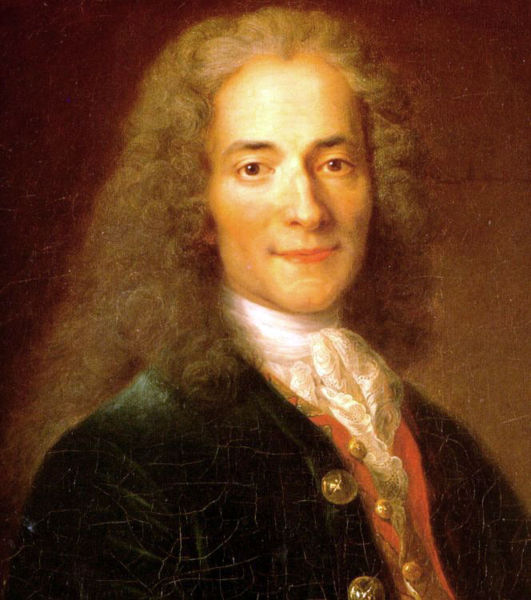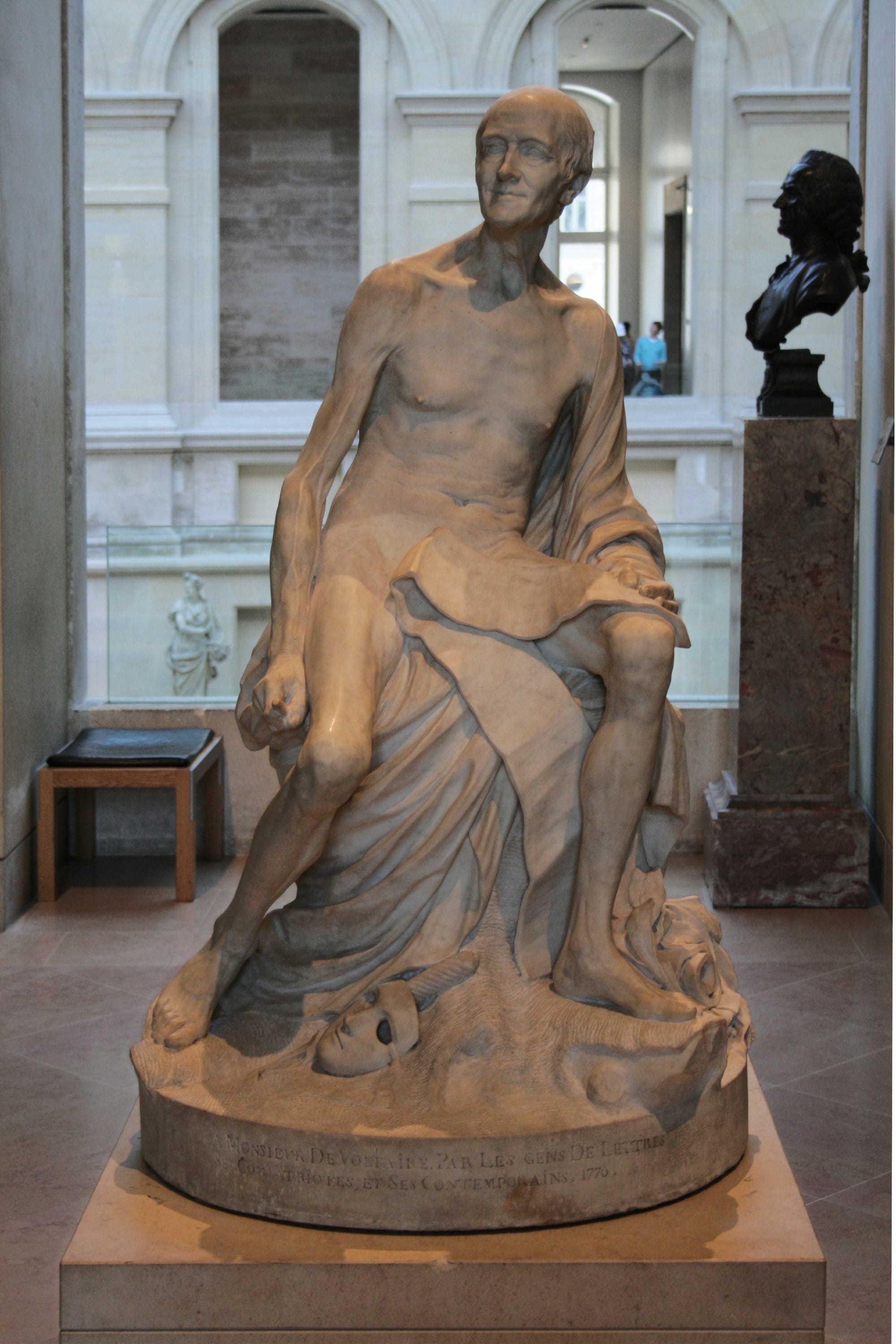Voltaire Nu

Voltaire, who was born in Paris in 1694, met Ninon de Lenclos in 1705 when he was 11 years old. Voltaire managed to find a way to avoid following in his father’s footsteps, by writing satirical poetry and other works that made him very popular with the smart set, but that also made him many enemies. As a result he spent time imprisoned in the Bastille and in exile in England. Later in life, after fleeing Berlin (he offended Frederick the Great) and unwelcome in Paris (Louis XV was no fan), he headed to Geneva, Switzerland, which promptly banned the publication of La Pucelle, his satiric poem about Joan of Arc. It was this train of events that led to Voltaire writing what many believe to be his masterpiece, Candide, ou l’Optimisme (Candide, or Optimism) in 1759. This is what most portraits of Voltaire look like:

But, even philosophers grow old. And the sculptors can be brutally honest...

Jean-Baptiste Pigalle, after whom the area in Paris is named, created Voltaire Nu in 1776, in marble, two years before Voltaire's death. It caused a scandal, since wrinkly 81-year-olds were hardly considered suitable subject matter for art, but evidently Voltaire approved. He died one month before Rousseau, who must have appreciated outliving him, although he was only 66.
Mozart was dismissive: "I must give you a piece of intelligence that you perhaps already know — namely, that the ungodly arch-villain Voltaire has died miserably like a dog — just like a brute. That is his reward!" I expect Voltaire would have approved of that too.
